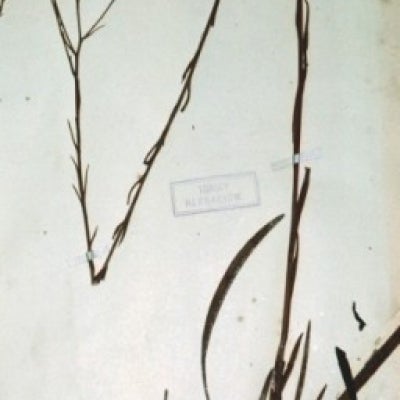Department of Biology
ESC 350
200 University Ave. W
Waterloo, Ontario, Canada N2L 3G1
Phone: (519) 888-4567 ext. 32569
Fax: (519) 746-0614
Chapman's Aster
Symphyotrichum subg. Chapmaniani (Semple) Semple includes a single species Symphyotrichum chapmanii (Torr. & Gray) Semple and Brouillet (Semple et al. 2002). First describe as Aster chapmanii, the species was treated as Helastrum chapmanii by Shinners (1969) and then as Eurybia chapmanii by Nesom (1994). Brouillet et al. (2001) determined that it belong within Symphyotrichum based on DNA sequence data. The species is basal within the genus but has a derived chromosome number of 2n = 14 (Brouillet et al.. 2006, FNA). It's cormoid rootstock was thought to indicate a relationship with the Heleastrum asters (Eurybia sect. Heleastrum), but this is not the case. It is native to wet savannas, pine flatwoods, bogs, and acid swamps of the Apalachicola drainage of Panhandle Florida and adjacent Alabama (where it may be extirpated). The cypselae fruits have a triple pappus of fine mid length outer bristles, long tapering bristles, and long clavate inner bristles (Semple & Hood 2005).
Semple, J.C. and J.L.A. Hood. 2005. Pappus variation in North American Asters. I. Double, triple and quadruple pappus in Symphyotrichum and related aster genera (Asteraceae: Astereae). Sida 21: 2141--2159.
Last updated 28 January 2014 by J.C. Semple
© 2014 J.C. Semple, including all photographs unless otherwise indicated










